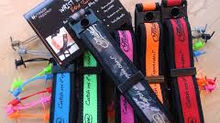The Ethical Hunter & The Crossbow
- Boss Crewmember Eli Rooney
- Aug 29, 2015
- 9 min read
As a hunter, or for use of a better term, a sportsman, there are set laws that I abide by. There is a written code of ethics taught to me at the age I become licensed. But there is also an unwritten code. This code has a great number of aspects, but can be generalized as a true sportsman always hunts in such a way that never puts him/herself, or even the prey hunted to shame. A concept that is more directed towards the shame of the sportsman is that of “fair chase.” The element of fair chase, according to The Pope &Young Club is defined:
“…the ethical, sportsmanlike, and lawful pursuit of free-ranging wild game animals in a manner which does not give the hunter an improper or unfair advantage over the animal. It does, however extend beyond the hunt itself; it is an attitude and a way of life based in a deep seated respect for wildlife, for the environment, and for other individuals who share the bounty of this continent’s natural resources.”
After mulling over the idea of fair chase, I have come to a conclusion that

crossbows, in an archery only season, give a more technological advantage over other bows, and decrease the odds for survival of the game hunted. There are many points and reasons that can lead to the element of fair chase being hindered or broken. From a utilitarian perspective, all sportsmen support their views of fair chase, to better the sportsman community as a whole. There are, however, questions arising in the minds of sportsmen including the technological designs of crossbows and the advantages they have over a standard hunting bow and how those advantages diminish the element of fair chase or cloud the vision that fair chase instills within a hunter regarding the sport of hunting.
Hunting in North America has been around for centuries. From the beginning of Manifest Destiny west in the United States, mountain men hunted not necessarily for sport, but for survival. They hunted to provide food for themselves and their families; trapping was also popular to give raw materials for the making of products such as top hats made from beaver pelts. Today hunting has evolved, incorporating a sporting aspect as well. The hunter then becomes considered a sportsman, and hunts both for love of the hunt and for supplying food to his/her family.
A sportsman has many different options for weapon choice. Of these choices there are a standard hunting rifle, muzzleloader, bow and crossbow. There are established seasons for all of these weapons and these seasons are established based on harvest probabilities with those weapons. For example, the “Archery Only” season is the first of the hunting seasons because the big game have not been chased yet, leaving a good possibility of close range hunting. The “Any Weapon” season is after the archery season because short range hunting is not as likely to harvest an animal since the game is obviously skittish and keep their distance from perceived danger. The sportsman then can purchase a tag(s) based on the animal, time of season, and weapon used. The dilemma currently at hand, that only a handful of states currently allow, is the use of a crossbow during the archery only season.
The hunting bow has developed and improved greatly since its early use in North America by the Native Americans. The standard hunting bow used today is the compound bow. There are limitations put on the compound bow, by individual state fish and game organizations, so that there is not an unfair advantage given to the hunter over the game being hunted. One of these limitations includes the percent of “let-off” allowed. Let-off on a bow is the point at which in the process of the draw, the hunter is relieved of holding the entire strength of the bowstring. In Idaho, there is a maximum of 85% let-off allowed when hunting in the field. Now a crossbow eliminates the process of holding the strength of the bowstring. The bolt is locked in place, and constantly ready to fire by use of the trigger, much like a rifle. This gives the hunter an advantage of not needing to exhaust him/herself with muscle strain holding a crossbow in a position ready to fire for extended amounts of time.
Another advancement that a crossbow has over a standard bow is that a crossbow has a mounted scope. A scope is a variable zoom tool used in combination with crosshairs to direct shot placement of a weapon. The sights of a standard bow are an open pin system for set distances. This difference in sights can obviously conjure disagreements on advantageous use. Being in a close range hunting season, a variable zoom gives an advantage of greater accuracy in longer distances. Even though a crossbow and standard bow have roughly the same effective range, a crossbow is slightly extended with this use of a scope.
Statistics show that the crossbow and standard compound bow are fairly close to the same measures of velocity (in feet per second) and amount of drop at a certain distance based on not just the velocity but the difference in bolt for the crossbow and arrow for the bow. The bolt for a crossbow average about 20 inches in length, and average weight of 415 grains. An arrow, on the other hand, averages 30 inches in length, and an average weight of 350 grains. The two top competing weapons from both categories, the APA Innovations Black Mamba compound bow and the Bowtech Stryker 175 crossbow, were tested at varying distances. The Black Mamba was found to have a maximum velocity of 345 fps, and the Stryker 175 had a maximum velocity of 405 fps. This is a huge difference of 60 fps, and could easily give a better advantage to the hunter using the crossbow. With a greater velocity, the bolt has a likelihood of longer flight, as well as decreased time for the animal to react to hearing the shot because the bolt travels quicker to the point of impact. When both weapons were tested, there was minimal distance of drop measured between 10 and 30 yards. At the 30 yard target, the Stryker 175 had a drop of only 10 inches, andthe Black Mamba had 14 inches. Measured again at a 50 yard target, there was a significant difference with the Black Mamba dropping 12 inches more than the Stryker 175. The majority of the different crossbows all seemed to give this same significant trend of shooting flatter for longer distances, and with greater speeds. This technological difference would give the sportsman looking for best performing, a weapon choice of a crossbow over the standard hunting bow. (Crossbows by TenPoint Technologies)
Upon analysis of the differences that technology has factored in the performance of the crossbow, we then go back to the element of fair chase. Every year, new technological advances are giving more of an advantage to the hunter and taking away the odds that big game face to live. Plainly seen, crossbows give more advantage to the hunter than do standard compound bows, minimizing the element of fair chase.
As of March 21st, 2011, 17 of the 50 states currently allow the use of crossbows in the archery only season. There are 20 states that allow specified seasons for crossbows; 13 states allow the use of crossbows only by disabled hunters only; and the remaining states don’t recognize the crossbow as a legal hunting weapon period.
The crossbow has been deemed by the majority as a hunting weapon, and in most states also legal. The dilemma faced is that of allowance within archery only seasons, but this has been shown as an advantage statistically overthe standard hunting bow. Legality doesn’t seem to be that pressing of an issue faced by the states. However, the main disagreement is what season to allow such technology of this weapon. To avoid controversy, within twenty states, a separate season was established for the crossbow. This movement has had a positive impact, and numbers of hunters in this season compared to archery only season are relatively the same. Since crossbows are a growing attraction not only for the average sportsman, but for more elderly and even more female hunters, demand for crossbow production is steadily increasing. This is not the only weapon that has been given a separate season, for the muzzleloader also has its own season. The separate seasons seems to be satisfactory for most states, and keeps hunters happy. The second that one weapon season is infringed upon, such as the crossbow in the archery only season, issues arise with disgruntlementand ill support for the movement of allowing crossbows. (Crossbows for the Crossover Hunter)
Some of the states, including Idaho, only allow for the crossbow with a permit and doctor’s approval that they have a disability that keeps them from being able to fire a regular bow effectively. This solution still gives the opportunity for the elderly and disabled to still hunt during the archery only season with the use of the crossbow. In this sense, the crossbow is nothing more than something as close to possible to replicating the numbers and figures of the compound bow, but in a way that can be used by those suffering from physical incapabilities. For these states, one can assume that the expectation to keep the spirit of the sportsman alive, in any man or woman that so desires, is an essential aspect to the sportsman’s world.
When thinking of the best line of action for this technological dilemma, what side does one take? Support archery only and the ethical element of fair chase, or support the allowance of crossbows in cohesive unity with the standard hunting bow? As for me, as a sportsman that has been taught the life of a hunter by my father, him his father, and so on before that, it so much as stands that I should live the life of a sportsman to keep the ethics of the hunt as sanctuary.
The written ethics that a hunter should live by are as follows:
1. Obey all applicable laws and regulations.
2. Respect the customs of the locale where the hunting occurs.
3. Exercise a personal code of behavior that reflects favorably on your abilities and sensibilities as a hunter.
4. Attain and maintain the skills necessary to make the kill as certain and quick as possible.
5. Behave in a way that will bring no dishonor to either the hunter, the hunted, or the environment.
6. Recognize that these tenets are intended to enhance the hunters experience of the relationship between predator and prey, which is one of the most fundamental relationships of humans and their environment.
(Boone and Crockett Club)
I desire to keep hunting throughout my days, and upkeep the continual of teachings of an ethical sportsman. When I am no longer physically able to make that happen with a bow, I know that a crossbow is still available for the continuation. Each sportsman puts on a personal attitude for ethical decisions. When a situation arises that calls for a decision to support or not support the use of crossbows, we must think of our hunting community as a whole for the well-being of the sport itself. Shall we ban crossbows altogether? This is such an extreme solution that removes any aspect of close range hunting for those incapable of bow hunting. This mindset is nothing butignorant to a creation of such technology that enables the ill bodied to practice a code all sportsmen agree upon.
The obvious choice from the utilitarian, if an able bodied man were to decide upon the thought of future generations, would be to not succumb to a greater advantage over game in an archery only season by the use of a crossbow, but respectfully analyzing his personal ethical code. Making a choice to something more advantageous will only lead to continuation of this attitude to constantly create means of higher advantage over game in the future. Using the crossbow as restricted to only some members of the sportsman community (elderly and disabled)can foster positive attitudes to welcoming the sport of hunting across the country for it has an inclusion of all people. Maximizing opportunities for physiques of all people, while still standingin an ethical realm of fair chase, will win support of many more people who are opposed to sportsmen and the sport of hunting. The support won’t be won by the factual information leading to debatable issues, but by the presence of an outward perspective of a community enriched and led by their own ethical moral. States set the rules and laws for the weapons of seasons; but it is up to the sportsman to determine what he/she deems more ethical for weapon of choice. Keep the sport of hunting as equally successful for both the sportsman, and game, and limit your personal advantages by refraining from the use of a crossbow during an archery only season. As the utilitarian promotes, benefit the game as well as the hunter.
Have a great season!
- Eli

REFERENCES
"Boone and Crockett Club | Fair Chase Statement" Boone and Crockett Club | Home. Web. 01 Nov. 2011.
"Crossbows by TenPoint Crossbow Technologies - Frequently Asked Questions." Crossbows and Crossbow Accessories by TenPoint Crossbow Technologies!Web. 24 Oct. 2011.
"Crossbows for the Crossover Hunter" Crossbows and Crossbow Community by Crossbow Nation. Web. 31 Oct. 2011.

















































Comments